Repairing ventilation in the toilet and bathroom: how to identify and repair the hood in the bathroom yourself
In the absence of good air exchange, unpleasant odors and excess moisture accumulate in the bathroom. This creates ideal conditions for the development of harmful flora.Mold and mildew, which are very harmful to health, immediately appear in the bathroom, appliances and furniture can deteriorate, and finishing materials are gradually destroyed.
A properly organized ventilation system helps maintain a healthy indoor microclimate. But how to prevent possible problems associated with its malfunction, and what to do if the hood stops working?
We will talk about the signs and causes of poor performance of the ventilation system, ways to assess the performance of ventilation ducts using simple improvised means. We will also analyze typical malfunctions and explain how to repair ventilation in the toilet and bathroom with your own hands.
The content of the article:
How does the ventilation system work?
To find and eliminate the cause of poor system operation, you need to understand the device and principle of operation ventilation in the bathroom and toilet.
Air circulation in apartments and houses occurs due to two types of ventilation: natural and forced. In the first case, air enters the premises through windows, doors or ventilators and is removed through special channels located at the top of the wall in the kitchen and bathroom.
Rising through a vertical air duct, the air masses, along with excess moisture, dust and carbon dioxide, go into the ventilation shaft. The whole process is carried out due to the difference between the pressure and temperature of the internal and external air.
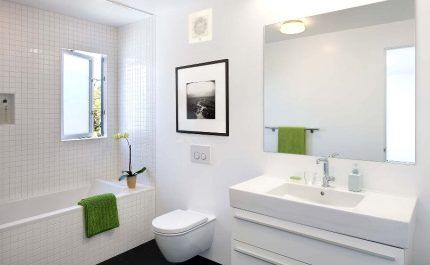
The effectiveness of a standard ventilation system is affected by the degree of tightness of windows and walls, the condition of ventilation ducts, and weather conditions. Therefore, the operation of natural supply and exhaust channels is often unstable.
If the power of natural ventilation is not enough, a controlled forced system is installed in the bathroom. The quality of its operation does not depend on external factors, but is determined by the performance of the fan, which increases the intensity of air exchange and speeds up the procedure for removing exhaust air, displacing it outside. Fresh air enters the bathroom from the living rooms.
Diagnosis of problems with the hood in the bathroom
Special diagnostics aimed at checking draft will help to assess the condition of the ventilation system. The event is carried out in several stages using improvised means or special devices.
It is better to check the operation of natural ventilation in the cold season. Before doing this, it is recommended to ensure an influx of fresh air: open the window or set the windows to ventilation mode. In sanitary rooms, the door should be opened slightly.
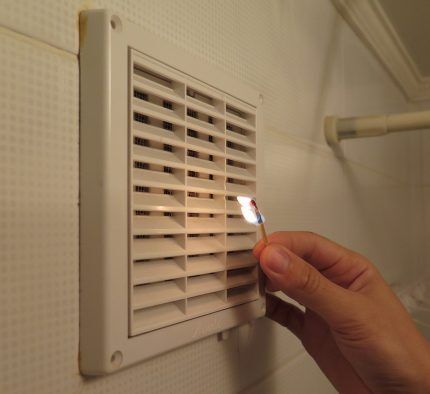
The functionality of the ventilation ducts is assessed by the behavior of the flame brought to the grille:
- leans towards the grate – the system is working, traction is normal;
- remains unchanged - no traction;
- leans towards the room – there is reverse thrust.
It is worth considering that this technique is unsafe and is highly not recommended for use by gas service specialists. If there is a leak in the house, gas accumulates in the ventilation shafts. Under such circumstances, an open flame may cause a fire or explosion.
A safer way is to test with a thin sheet of paper. As in the previous case, it is brought to the ventilation hole. The paper is taken by the lower tip and held in a vertical position near the grate.
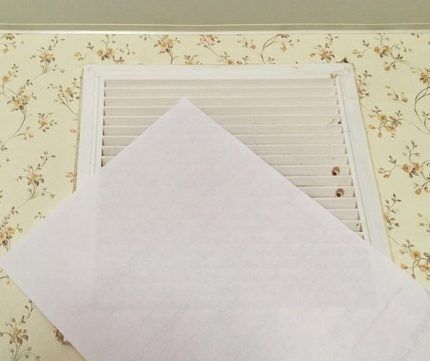
The outflow of air can also be felt through tactile sensations. To do this, wet your hand and bring your wet palm to the vent. The presence of air flow is determined by a cooling blow.
These diagnostic options will only give a general idea of the performance of the ventilation in the bathroom. You can obtain a quantitative assessment of efficiency and determine whether the state of the system complies with standards using special instruments - anemometers.
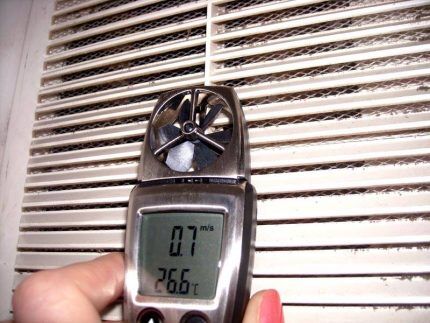
The device is brought to the ventilation grill at the distance specified in the instructions. After a few seconds, the display shows the air flow rate (V).Having fixed the resulting figure, you need to calculate the volume of air passed through the system using the formula:
Q = V x S x 360,
Where
- S – cross-sectional area of the ventilation duct in m²;
- V – air flow speed.
The result is compared with standard parameters. The optimal value for a bathroom is 25 m³/h. The norm for combined bathrooms should be twice as much.
We also recommend that you familiarize yourself with verification rules operation of ventilation ducts in the apartment.
Signs and causes of ventilation malfunction
When the ventilation system does not cope with its functions, problems arise. This affects the comfort of residents and can lead to unpleasant health consequences.
Impaired air exchange in the bathroom can be judged by the following signs:
- increased air humidity;
- accumulation of abundant condensation on mirrors and walls of the bathroom;
- unpleasant musty odors;
- rust formation on metal surfaces;
- destruction of finishing materials and “swelling” of furniture coverings;
- appearance fungus and mold on the ceiling, walls and corners;
- the hood in the bathroom blows in the opposite direction;
- loud noise from air ducts.
Before troubleshooting, you need to find out the specific cause and understand where exactly intervention is required. There can be several reasons for ventilation failure. The main and most common problem is clogged ventilation shafts. Insufficient air flow also causes traction problems.
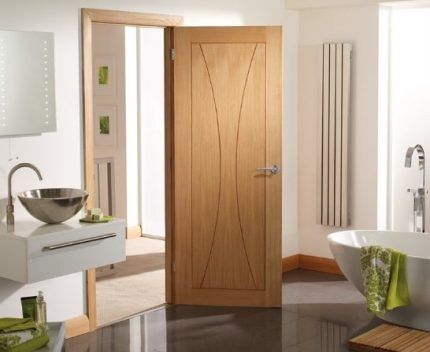
This usually happens after installing sealed PVC windows with double glazed windows and additional sealing contours. They impede the flow of fresh air flow, significantly weakening draft.
Failures in the functioning of ventilation also occur due to damage or wear of the exhaust fan mechanisms, clogged filters in the grilles, and corrosive processes. Such factors lead to deterioration of air quality and increase the resistance of channels.
Another reason for poor ventilation is repairs or re-equipment of the neighbors’ system.
There are several possible scenarios for the development of events:
- as a result of modernizing the layout or installing additional equipment, the ventilation ducts are blocked;
- during repairs on the top floor, the shaft becomes clogged with construction waste;
- the creation of a strong forced inflow from below provokes reverse draft, preventing air circulation.
Although these actions on the part of neighbors are not intentional, they are classified as administrative violations, for which a fine is imposed.

The operation of exhaust ducts is negatively affected by significant deviations from the vertical of the air ducts, unsuccessful roof structure designs, and high heat transfer rates of external walls, which can be reduced by insulation.
In addition, deterioration in air exchange is often associated with the time of year. Ventilation works most effectively during cold periods.In summer, due to almost the same temperature inside and outside, a so-called “air jam” is created in the room. When external temperatures rise, natural draft always weakens.
Ways to fix ventilation in the bathroom
Having found out the cause, you can begin to work on eliminating the malfunction and optimizing the functioning of the ventilation system. We provide detailed instructions on how to do this below.
Method #1 - cleaning the grille and ventilation ducts
In most cases, the ventilation system stops working due to a simple blockage. According to generally accepted rules, residents of high-rise buildings do not have the right to repair and clean utility lines at home. To do this, it is recommended to call specialists from managers and other organizations that have permission to carry out such types of work. But there are some things you can do on your own.
First of all, you need to check your section of the shaft coming from the bathroom: remove the grate and look inside, highlighting it with a flashlight. Under no circumstances should you illuminate the channel with a lighter or match. If dry debris ignites, the fire will instantly spread throughout the entire ventilation duct.

Anything can be in the mine: construction waste, cobwebs, dust, dead birds and rodents. Debris found in an accessible, visible area should be carefully removed using a spatula, spatula or toilet brush. Then you can vacuum the area near the entrance.
After completing the duct cleaning activities, it is advisable to check the ventilation again using one of the listed diagnostic methods. If the problem persists, it means the ventilation shaft at home is clogged. To her clean, you need to contact the housing authority or the landlord.
Method #2 - optimizing air flow
The second way to improve the performance of a ventilation system is to optimize air flow. Since the natural circulation of air masses is often disrupted due to the tightness of metal-plastic windows, we’ll start with them.
On the one hand, modern window designs retain heat, but on the other hand, they make ventilation difficult. What to do in this case?
There are several options:
- frequent ventilation of premises;
- window valve installation at the top of the frame;
- installation wall supply valve.
Keeping windows open all the time is not the best solution in winter. It makes much more sense to install a supply valve on the wall or order window designs with a built-in valve on top.
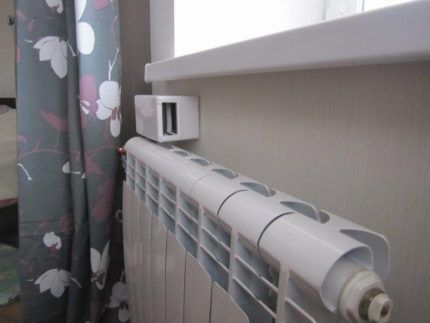
An additional method of improving air exchange in the bathroom is depressurizing the doors. If a high threshold is installed in the bathroom, there is no need to remove it.

Alternatively, trim the bottom of the door leaf by about 2 cm.This way the door will not fit tightly to the frame, which will allow air to penetrate more freely into the room.
Method #3 - arrangement of forced ventilation
Due to the peculiarities of the arrangement and high humidity, the natural ventilation system in bathrooms does not always give the desired effect. In addition, if neighbors have additional equipment installed in the ducts, this often provokes reverse draft, disrupting air exchange.
In this situation, cleaning and optimizing the inflow will not help restore normal operation of the ventilation system. In the absence of sufficient traction after applying the previous methods, there is only one way out - fan installation.
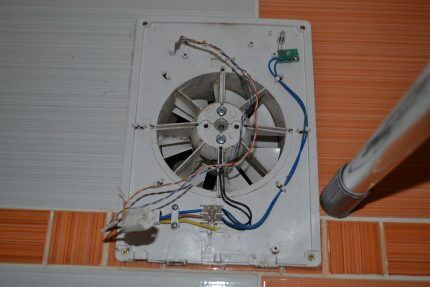
Criteria for choosing a suitable bathroom fan:
- Performance.
- Noise level.
- Power consumption and motor type.
- Degree of housing protection.
- Additional options.
The minimum productivity value for a bathroom is 50 m³/h. But it is more reliable to calculate the required indicator in each case individually using the formula:
Vvent = V x (6…8),
Where
- V – volume of the room;
- (6…8) – air exchange rate limits recommended for a bathroom.
To calculate the volume of a room, you need to multiply the area by the height.
If the ventilation system has reverse draft, you should choose a more powerful fan that can suppress the resistance in the duct.
It is desirable that the noise level of the device does not exceed 40 dB. It is also important to make sure that the equipment is capable of operating in conditions of high humidity and is protected from water ingress. The optimal degree of protection of the housing for installation in the shower area or above the bathtub is IP25. It is indicated on the box.
The electrical power consumption depends on the speed of rotation of the blades and is about 50-200 W. There are models with several speed modes.

Depending on the installation location, there are wall and ceiling fans.
By type of construction there are:
- axial – easy to install, easy to use, average in performance;
- centrifugal – have high power and are noisy.
As additional functions, the device may include a timer, humidity and motion sensors. The timer turns on the device simultaneously with the lighting and turns off automatically, taking into account the preset delay time.
A useful option for the bathroom is a humidity sensor. It turns off the fan if the moisture level is too high. Models with motion sensors are installed in toilets. They launch the device by detecting movements within the visibility range and viewing angle.
We talked more about the types of fans and the intricacies of choosing the best one in next article.
Installing the fan yourself is easy. It is necessary to supply power, adjust the dimensions of the exhaust opening, secure the device inside the ventilation pipes or at the outlet of the socket, depending on the type of structure, and connect the switch.
Method #4 - repairing the hood fan
If the room has forced ventilation, a sudden deterioration in air exchange may be due to the fact that the exhaust fan in the bathroom has stopped working for some reason.
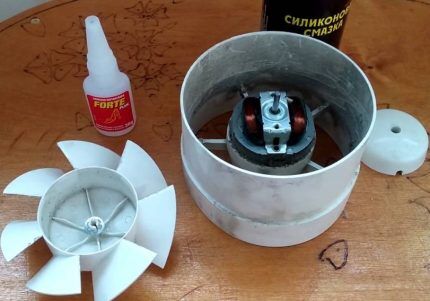
Fan failures are divided into mechanical and electrical.
Typical signs of mechanical problems include:
- extraneous noise during work;
- reduction of shaft rotation speed — turning it off manually requires significant effort;
- shaft stop — rotation in the off state is impossible manually or occurs with considerable effort.
Electrical breakdowns are accompanied by the smell of burnt wiring, circuit breakers tripping when the fan is turned on, interruptions in operation, and difficulties in changing modes. The rotation speed may also be reduced, but the shaft will still rotate freely by hand when the unit is turned off.
The most common problem is contamination of bearings and insufficient lubrication of moving elements.
If there is extraneous noise and the speed decreases, you should:
- disassemble the fan;
- clean the bearings from dust and dirt;
- lubricate the parts with a few drops of machine oil;
- assemble the device.
If lubrication does not help, noise and shaft beating persists during operation, most likely the fan will have to be replaced. Replacement is also carried out if any of the parts, for example, the impeller, are destroyed.

A common cause of fan failure is a blown fuse. In this case, users recommend trying to solder a copper wire jumper in place of the failed part and wrap it with insulating tape.
Please note that if you do not have knowledge in the field of electrical engineering and do not understand the features of the fan design, it is better not to carry out repairs yourself. It is more advisable to contact specialized workshops.
In practice, in most cases it is more profitable buy a new devicethan repairing a broken bathroom exhaust fan.
Conclusions and useful video on the topic
How to clean the ventilation duct from dust and dirt with your own hands:
How to eliminate noise and vibration in an exhaust fan: detailed instructions for disassembling the device and lubricating parts:
Analysis of one of the typical fan malfunctions: what to do if the fuse is blown:
Failures are easier to prevent than to fix. Therefore, it is worth annually testing the ventilation in the bathroom, keeping the ventilation grilles clean, and periodically cleaning the accessible areas at the entrance to the ventilation duct. It is also advisable to take measures to improve the circulation of air masses - ventilate the premises, install window or wall valves.
If the ventilation stops working, try to determine the cause of the problem and use one of the appropriate methods for repairing and optimizing the system. In case of serious breakdowns, contact specialists of management companies.
Would you like to supplement the information above with useful comments? Or you still have questions about troubleshooting the hood, ask them to our experts and other site visitors - the feedback form is located below the article.



